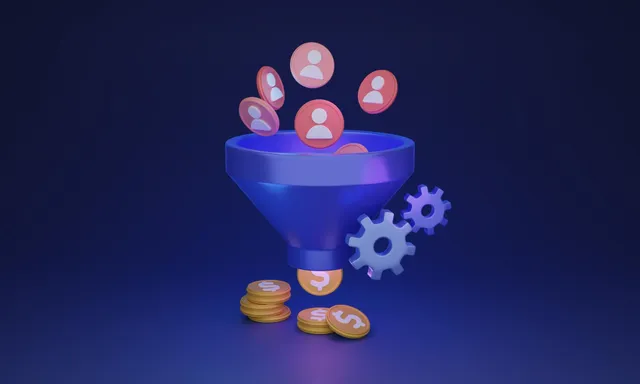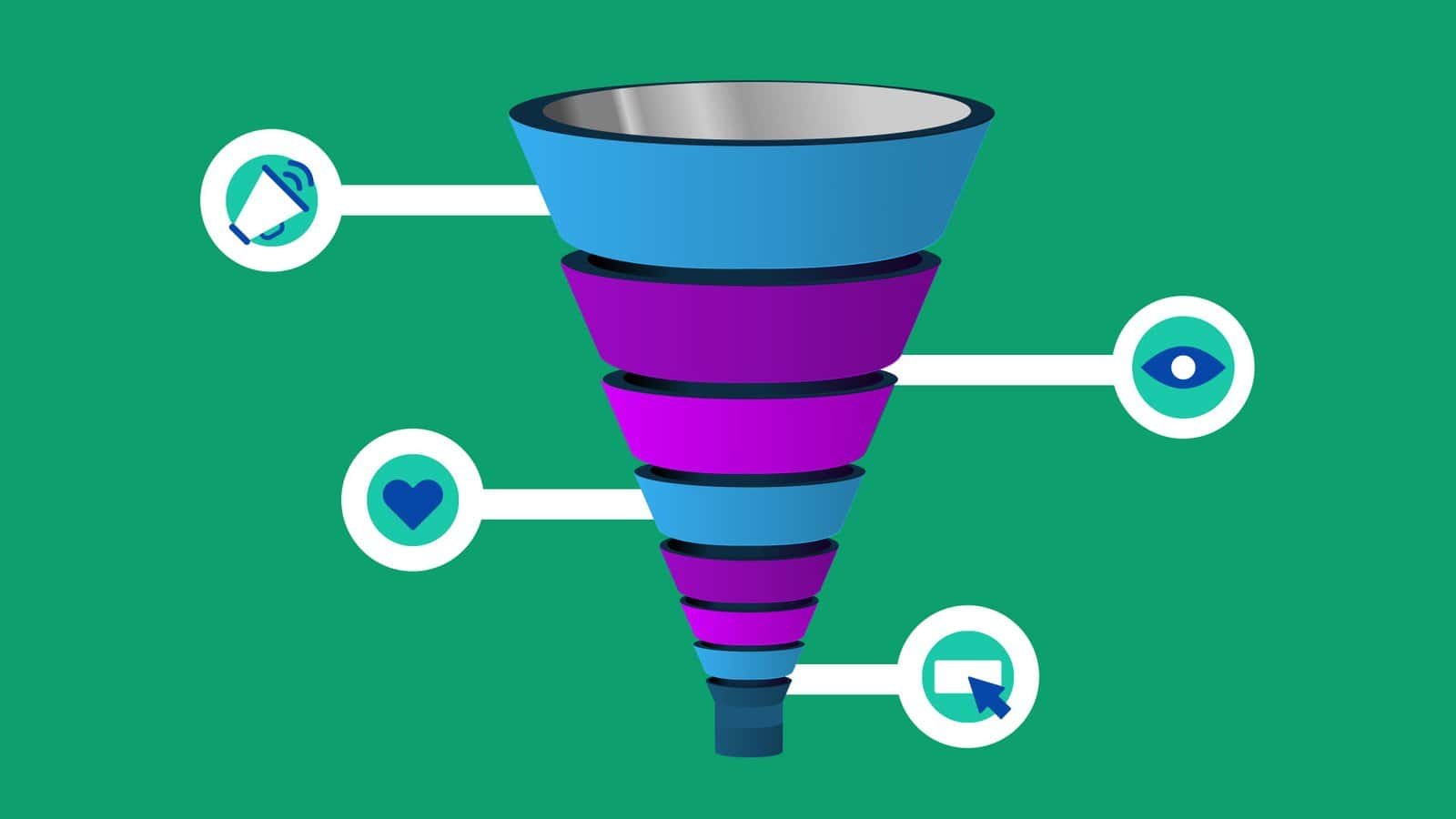Hey there! Funnels. They’re the lifeblood of any business. They guide your customers from casual browsers to loyal buyers. But what happens when your funnel springs a leak?
Panic? Nah, we’re smarter than that.
We’re going to equip you with the ultimate funnel diagnostic toolkit, powered by the magic of advanced analytics! Get ready to plug those leaks and turn your funnel into a conversion machine!
Beyond the Basics: Why Advanced Analytics Are Your Secret Weapon
Okay, we get it. Funnels are important. But why do we need “advanced analytics” to fix them? Can’t we just eyeball the problem areas and make some tweaks?
Sure, you can take a guess, but advanced analytics provide the laser-focused insights that guesswork simply can’t match. They go beyond surface-level observations, revealing the why behind the what.
Here are a few ways advanced analytics take your funnel optimization to the next level:
- Segment Your Audience: Advanced analytics allow you to slice and dice your data to understand how different customer groups behave within your funnel. This allows for targeted interventions.
- Uncover Hidden Patterns: Advanced analytics can identify subtle patterns and correlations that might be missed by the naked eye.
- Predictive Power: They can help you forecast future performance and proactively address potential issues before they impact your bottom line.

Cracking the Code: Advanced Analytics Techniques for Functional Diagnostics
Ready to get your hands dirty with some data wizardry? Let’s explore some of the most powerful advanced analytics techniques for funnel diagnostics:
1. Cohort Analysis: Unraveling User Behavior Over Time
Remember those group projects in school? You were grouped with people based on shared characteristics, right?
That’s the basic idea behind cohort analysis. It groups users based on a common characteristic (like acquisition date, signup source, or first purchase) and then tracks their behavior over time. This allows you to see how different cohorts move through the funnel and identify patterns unique to specific groups.
Here’s how cohort analysis can supercharge your funnel diagnostics:
- Identify High-Performing Cohorts: You can see which cohorts have the highest conversion rates and understand what makes them tick.
- Spot Drop-Off Trends: Cohort analysis can reveal if certain cohorts are consistently dropping off at specific stages, signaling a potential problem with that part of the funnel.
- Personalize Onboarding Experiences: By understanding how different cohorts behave, you can tailor your onboarding process to their specific needs, boosting engagement and retention.
2. Regression Analysis: Unveiling the Factors Driving Conversion
Imagine you’re trying to bake the perfect cake. You tweak the ingredients a bit, add a dash more of this, a pinch less of that, and see how it affects the final product.
That’s the essence of regression analysis. It helps you understand how different factors influence a particular outcome—in our case, conversion rate.
Here’s how regression analysis can pinpoint the drivers of your funnel’s success (or lack thereof):
- Identify key conversion factors: It can pinpoint which variables have the strongest impact on conversion, helping you focus your optimization efforts.
- Quantify Impact: Regression analysis tells you not only what factors are important but also how much they influence conversion, allowing for data-driven prioritization.
- Test Hypotheses: It provides a framework for testing different hypotheses about your funnel. For example, you can test whether a new landing page design or a change in pricing significantly affects conversion rates.
3. Machine Learning: Predicting the Future of Your Funnell
Ever wish you had a crystal ball to see the future? Well, machine learning might just be the next best thing.
Machine learning algorithms can analyze vast amounts of historical data to predict future outcomes. They can learn from past patterns to forecast how users are likely to behave in the future, enabling you to be proactive in your optimization efforts.
Here’s how machine learning can give you a sneak peek into your funnel’s destiny:
- Predict Churn: Machine learning models can identify users who are most likely to churn, allowing you to intervene with targeted retention strategies.
- Forecast Conversion Rates: By analyzing historical data, machine learning models can forecast how changes to your funnel might impact conversion rates, helping you make informed decisions.
- Personalize User Journeys: Machine learning can power recommendation engines and personalize content to individual users, increasing engagement and conversions.

From Insights to Action: Turning Data into Dollars
Now, you’re swimming in a sea of insights. But what good is all this data if you don’t know what to do with it?
Let’s translate those brilliant analytical discoveries into concrete actions that will fix your funnel and boost your bottom line.
1. Address Drop-Off Points: If cohort analysis reveals that users are abandoning ship at a specific stage, investigate why.
- Is the page loading too slowly?
- Is the form too complicated?
- Is the value proposition unclear?
Once you’ve identified the culprit, test solutions and track their impact on conversion rates.
2. Leverage key conversion factors: If regression analysis reveals that certain factors are driving conversions, double down on them.
- Highlight those factors in your marketing materials.
- Design your funnel to emphasize those elements.
- Test different variations to see what resonates best with your audience.
3. Act on Predictive Insights: If machine learning predicts that a particular cohort is likely to churn, intervene proactively.
- Offer personalized incentives to stay engaged.
- Send targeted emails addressing their specific concerns.
- Provide exceptional customer support to address any potential issues.

Conclusion
Congratulations, my friend! You’ve just graduated from Funnel Diagnostics 101. You’re now armed with the knowledge and tools to transform your leaky funnel into a well-oiled conversion machine.
But remember, funnel optimization is not a one-time fix; it’s a continuous process of improvement.
Keep experimenting, keep analyzing, and keep iterating. Your customers’ behavior is constantly evolving, and your funnel needs to evolve with them.
By embracing the power of advanced analytics and staying laser-focused on your customer journey, you can achieve funnel mastery and drive lasting success for your business!
FAQs
What are some of the best tools for funnel analysis?
- Google Analytics: The OG of web analytics, Google Analytics offers a wealth of data about user behavior on your website, including funnel visualization.
- Mixpanel: A powerful tool that specializes in tracking user events and creating funnels based on those events.
- Heap Analytics: A great option for automatically capturing all user interactions on your website, making funnel analysis a breeze.
I’m a small business owner. Is advanced analytics really necessary for me? While advanced analytics might sound intimidating, there are tools and resources available that make it accessible to businesses of all sizes.
Even basic funnel analysis can provide valuable insights. As your business grows, you can gradually adopt more sophisticated techniques.
How often should I analyze my funnel? The frequency of your funnel analysis depends on the volume of your traffic and the pace of your business. As a rule of thumb, aim to review your funnel at least once a month. For businesses with high traffic volumes or rapid growth, more frequent analysis might be necessary.

